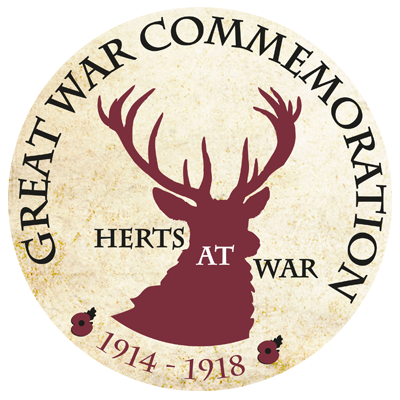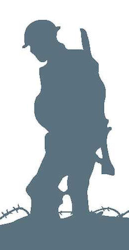Name
Roye Frank Cannon
Conflict
Second World War
Date of Death / Age
21/09/1944
25
Rank, Service Number & Service Details
Warrant Officer Class II
855012
Royal Artillery
135 (The Hertfordshire Yeomanry) Field Regt.
Awards: Service Medals/Honour Awards
Cemetery/Memorial: Name/Reference/Country
SINGAPORE MEMORIAL
Column 35.
Singapore
Headstone Inscription
NA
UK & Other Memorials
Hitchin Town Memorial, Hitchin Roll of Honour 1939 – 1945 (Book) St Mary’s Church, Hitchin
Biography
He was born and resident in Hertfordshire. Before being called up he had worked for his father. He was in the Territorial Army and was given the Service Number 855012 and was in the 344 Battery of the 135th (Hertfordshire Yeomanry) Field Regiment Royal Artillery which after mobilisation was part of the 18th (Eastern) Division. He was Battery Serjeant Major.
In November 1939 the Regiment was moved to counter-invasion stations in East Anglia as part of the Divisional Artillery of the 18th Infantry Division, moving later to Scotland and finally to Cheshire. 344 Battery was initially equipped with 8 x 4.5 howitzers, but in early 1941 was re-equipped with twenty-five pounder field guns.
The Regiment, consisting of 344 (Hitchin), 336 (Peterborough) and 499 (Macclesfield) Batteries, sailed from Gourock near Greenock in Scotland at the end of October 1941 for Halifax, Nova Scotia. They were transferred to the S.S. ‘Mount Vernon’ and went to Cape Town heading for the Middle East. On the way, war broke out between Japan against Britain and the United States of America, and the troopship was diverted to Singapore. It arrived on the 13th January 1942 during a Japanese air attack. Unfortunately, the guns and heavy equipment of the Regiment did not arrive with them, and they had a week of waiting to be equipped from local sources, delays being especially rife due to the shortage of towing vehicles. The Regiment was then sent to the west-coast of Johore and was in action before withdrawing to Singapore Island by the 31st January 1942. Under the Regiment's Commanding Officer, Lieut. Colonel P.J.D. Toosey R.A., they fought vigorously on the island in close support of the 11th Indian Division until ordered to destroy their equipment and surrender on the 15th February 1942.
Following the surrender they were moved to Changi and in May 1942 moved to Bukit Timah, both on the Island of Singapore. Late in 1942 about 500 of the Regiment were at Tamarkan building the bridge on the River Kwai, which was completed in April 1943. Lieut. Colonel Toosey did great work in trying to improve morale and to give the men hope and was quite falsely portrayed by Alec Guiness in the film ‘The Bridge on the River Kwai’. For the next year they continued at various work camps in Thailand and Malaya where they were continually starved and ill-treated until they were eventually sent back to Singapore.
On the 4th July 1944 they were loaded onto the ‘Hofuku Maru’, which had been built in 1918 and was of 5825 tons. The vessel sailed in convoy SHIMI-05, which reached Miri in Borneo on the 8th July and Manila Harbour in the Philippines on the 19th July. Here it stayed for engine repairs until mid-September. The P.O.W.s suffered terribly from heat, hunger and thirst. Some were sent to the Bilibid prison hospital in Manila and these men were replaced on the ‘Hofuku Maru’ by a similar number of British and Dutch from the Philippines, making a total of 1289 prisoners on board. The men were packed into the ship in dreadful conditions, with little food or water in the tropical heat, most of them suffering from tropical ulcers, dysentery and beriberi and no effective medical or toilet facilities.
On the 20th September eleven ships sailed in convoy MAT A-27, only the ‘Hofuku Maru’ carrying P.O.W.s. The convoy anchored in Subic Bay for the night. On the 21st September the convoy was heading north for Takao in Formosa when it was attacked by aircraft from a U.S. Aircraft Carrier about 80 miles north of Corregidor off the west coast of Luzon. At 10.35 am the ‘Hofuku Maru’ was struck by a torpedo or a bomb that rapidly flooded the ship and before the end of the day the entire convoy had been sunk by about 100 U.S. planes. About 200 P.O.W.s were either picked up by the Japanese or were recaptured after swimming ashore. The remainder were drowned. On the following day, the American aircraft returned and machine-gunned the Japanese fishing boats that had picked up a few of the ‘Hofuku Maru’ survivors, resulting in more casualties.
There is a private memorial stone to him in Hitchin Cemetery. He is also remembered on the Singapore Memorial to the Missing on Column 35.
His parents were Robert and Florence Cannon of Westmill Stores, Hitchin. When Mrs Cannon died, Mr Cannon married the lady who owned Sunnyside Stores, Hitchin.
Acknowledgments
David C Baines – ‘Hitchin’s Century of Sacrifice’, Paul Johnson - local historian, Mr George Prowse of Hitchin, ‘Hertfordshire's Soldiers’ by J.D. Sainsbury, Experiences of Alan Bowman & L.F. Starkey, Story of Reginald Bullard 135 Regt who died in the same incident, ‘Dictionary of Disasters at Sea’ by C. Hocking, ‘Lineage Book of British Land Forces’ by J.B.M. Frederick, ‘History of the Royal Regiment of Artillery - Far East Theatre 1941-46’ by M. Farndale, Herts Pictorial dated 31st Mar 1942 & 11th Dec 1945



